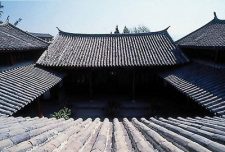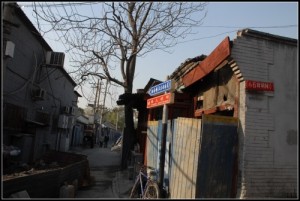The word Hutong is derived from the Mongolian word Hotog, which translates to “water well” and historically people have flocked to these locations because of the importance of being proximate to water. Hutongs form long, narrow alleyways that connect siheyuans, or courtyard residences, with one another and Beijing royalty first commissioned hutong building in the Yuan Dynasty; they are no longer than 9 meters wide.

Siheyuans are formed by four houses that create a rectangle; one house faces north, one house faces south, one house faces east and one house faces west. The north house faces the sun and the lead family lives there, in the east building the young generation stays, in the west other relatives dwell, and the south holds family gatherings or servants. Most hutongs run east – west and siheyuans run north-south. Thousands of hutongs and siheyuans encircle the Forbidden City in Beijing. One siheyuan, consisting of four rooms, typically housed one extended family; however, it is not uncommon for different families to occupy one siheyuan and share the courtyard.
Kublai Khan officially made Beijing the capital during the Yuan Dynasty and ordered Liu Binzhong, a scholar of his era, to construct the hutongs. Using city planning designs from 2000 years ago, Liu Binzhong created buildings that were nine by nine metres. In the Yuan Dynasty, there were 380 hutongs; in the Ming Dynasty, 2,077; and in the Qing Dynasty around 4,000.

Because of China’s rapid urbanization, many hutongs are being demolished so that apartment complexes or commercial building can be built. Conservation groups oppose these actions because hutongs preserve ancient Chinese culture, and are an important source of sociological study in Beijing. Hutong dwellers are compensated by the government when they have to relocate, but some fight the government mandates because their homes mean so much to them and because they are historical landmarks.
The oldest hutong in China is Sanmiao Street and it has existed for 9 centuries. Sanmiao Street is located in the Xuanwu district of Beijing, which is in the northwest corner of the city. Dong Xi Jiao Min Xiang is the longest hutong, stretching 3 kilometers long. One hutong, called Lumicang, housed grain for the royal court – it also became the source of rations for the military and fed peasants in times of draught.
Some hutongs have been named after government departments such as the Xinbu hutong (Department of Punishment), Cayuan hutong (Department of Investigation) and Silijian hutong (Department of Ceremonies). An emperor required one hutong to have all their women supply breast milk to Chinese officials.

